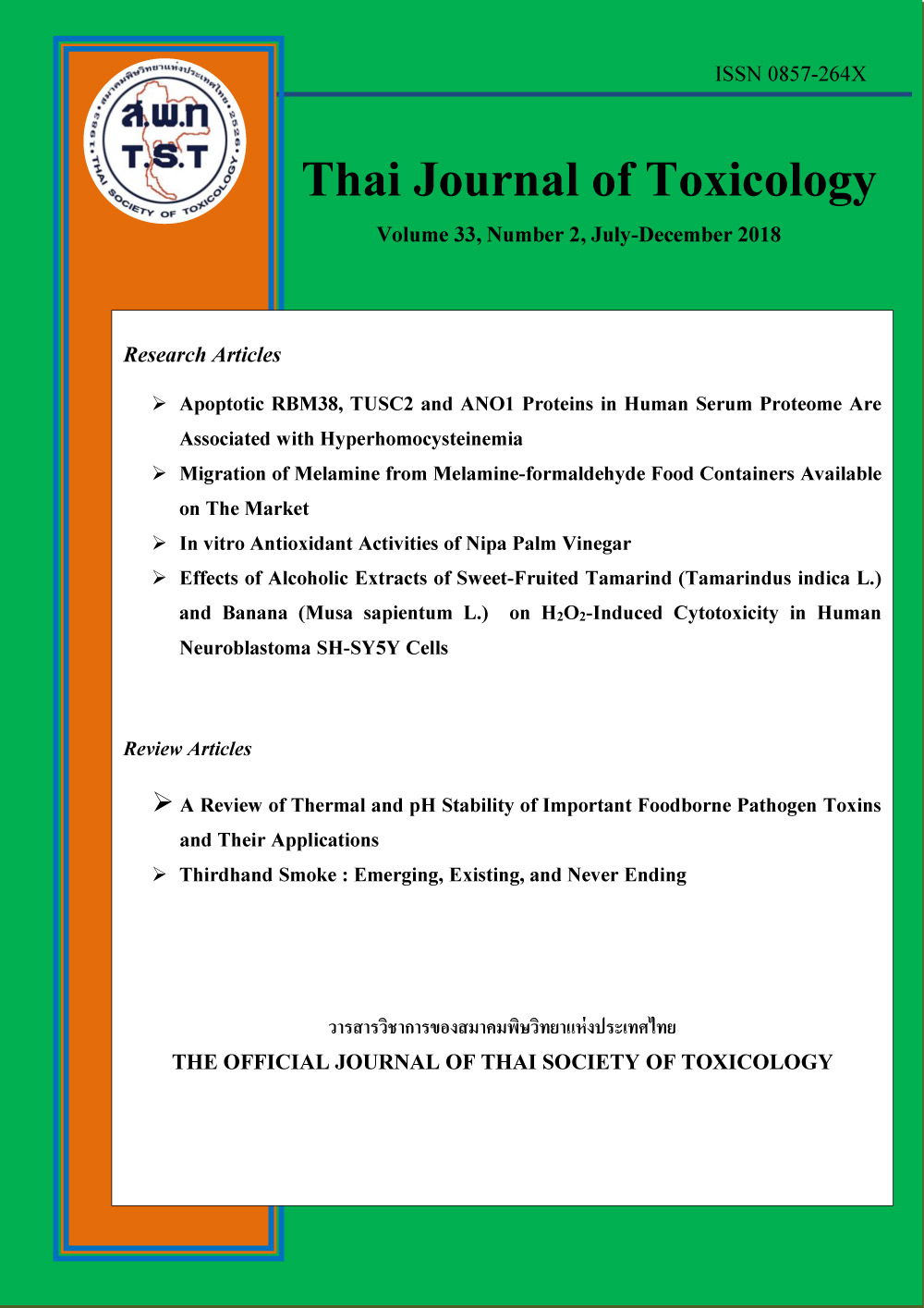A Review of Thermal and pH Stability of Important Foodborne Pathogen Toxins and Their Applications
Main Article Content
Abstract
Toxins are the major cause of foodborne illness and food poisoning outbreaks in Thailand. Those that we often come into contact on a daily basis are of microbial origin, such as staphylococcal enterotoxins (SEs), Bacillus cereus cereulide and diarrhoeal enterotoxins, botulinum neurotoxin, heat stable enterotoxins (STs), and heat labile enterotoxins (LTs) of enterotoxigenic Escherichia. coli (ETEC). Due to variation in molecular structure and biochemical properties, toxins differ in their stability and resistance towards various pH and heating conditions. While some toxins denature in slightly acidic or basic conditions, or with mild heat application, other types remain stable in moderately acidic and heat sterilization conditions, such as the Aspergillus aflatoxin and tetrodotoxin commonly found in puffer fish. Many techniques have been implemented in the food industry to eradicate hazardous microorganisms and their toxins. Common methodologies involve high heat processing (thermal inactivation), while novel methods, including ammoniation, biological detoxification, non-thermal high hydrostatic pressure (HHP), and pulsed light system (PLS) processing are currently being studied in terms of effectiveness. However, little is known of the application of novel technologies to inactivate toxins as most studies investigated the effects on vegetative cells.


